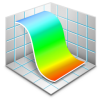Search the Community
Showing results for tags 'SVG'.
-
There is no glyph menu as in Illustrator to choose. Instead of cut in paste from Illustrator or sketch or changing your keyboard in Unicode. I found an alternative.There is a little mac software called "SVGSUS". You can click and drag an icon from this app to another. Of course, it works on Affinity designer. You need to import your icon as SVG or in a folder with a lot of SVG. Material icon are already imported and for font awesome, I found a repositories where all "characters" had been exported in SVG. Check this out: http://www.svgs.us and for font-awesome: https://github.com/encharm/Font-Awesome-SVG-PNG Max
-
- font-awesome
- material-icon
-
(and 4 more)
Tagged with:
-
Hi, I have some publication figures I need to export without loss of resolution. They *should* be entirely vector graphics, but are nevertheless getting rasterized and appear pixelated. The files are composed of 3-4 PDFs (generated in R and fully vector) plus panel letters (e.g. A-D) added in Affinity Designer. In Affinity Designer I can zoom in all the way and still see crisp text and line art. However, upon exporting as PDF, EPS, or SVG no matter what settings are use I get pixelation, even if I set a very high DPI (say 1000) or do not set DPI with the intention of the image remaining fully vector graphic. I am confused because *all* the elements in these files are fully vector graphics, but nonetheless I get loss of resolution upon exporting from Affinity Designer. I'm attaching an example file to this message. Please help!! ...I need to submit high resolution versions of these images to the journal ASAP. Thanks!! Dan. Figure3.afdesign
-
Hello, when I am exporting as svg, my stroked paths are becoming fills. Please see attached screen shots. #1 shows the settings as I create the red stroked paths (I have placed them above the raster image for clarity), #2 shows the file after export as a svg-the stroked paths have become red filled with a black stroke around the paths stroke. The svg is also attached (ice cream). Why is this happening? In the past couple of days I was able to create svgs in which the stroked paths stayed stroked paths- file attached (books) -I can't figure out what has changed. I am a new user, any help is appreciated. Thank you. ice cream.svg 7-books wwhite.svg
-
When importing an SVG file which contains a clipPath element, AD ignores the clipping path and displays objects that extend outside the clipping path. This image shows what such a graphic looks like in AD (the bottom star should be cut off at the border with the green stripe but is not): Here is what it is supposed to look like: I wish I could show you the SVG original, but the forum refuses to upload it. Adam
-
When exporting to SVG, even if Use relative coordinates is selected, absolute coordinates are still used to move to the next point within the same path element. I’m not talking about the first move within a path, which, unfortunately, has to be absolute because of the way SVG works, but about any subsequent moves within the same path. For example, take this snippet of SVG code produced by Affinity: ...c0.2,3.201 0.2,6.002 0.2,21.207l0,17.592ZM234.888,7.888c0,-0.8 0.2,-1.2 0.9,-1.4... It contains a relative curveto, a closepath command, an absolute moveto command, followed by a relative curveto command, etc. Everything is relative as it should be (with Use relative coordinates ticked). Everything, that is, except the moveto, which is absolute. Adam
-
I was browsing the forum outside the Beta section and noticed someone offering free AD brushes. So, I downloaded them, just to see if they would install and install they did. Then I just did some scribbles to see how they work. I saved the result, then exported it it to JPG, which worked as expected: Then I exported to SVG, but that only showed the strokes without the brushes: Brushes.svg Brushes.afdesign
-
Would be great if designer supported the full svg spec. I think what's missing for my particular svgs is supported for nested svgs -- they all show up at the origin rather than with the respective positions defined in the file.
-
Good evening! I try to get used to Affinity Designer and now have a problem to work with nodes from an SVG file. I have a file that gets loaded asa single layer object. I now want to select some nodes and group them as new object or to cut them with ctrl + x but it always cuts the whole big object, not only the selected nodes. I can delete selected nodes. There is the "Divide" tool, that does get most parts separated into own objects, but sometimes has problems with thin lines like with my shield, it makes big filled objects instead of thin lines. Maybe someone can tell me how I can get own objects out of closed nodes? Problem this shield: gets divided to full black objects: HTML5-SVG-SingleObject.svg shild.svg
-
Hi, I've done some artwork in affinity and I used a blur feature. I tried to export it as svg and the artwork looks generaly ok unless the parts where I used blured objects for shading. When I open the file in affinity it looks quite ok but I tried to open it in Inkscape (the Illustrator crashed when I tried to open it) and it looks like in the picture below. I don't know if it's a bug or if I exported it a bad way or it may be common export issue. I didn't found similar topic so sorry if I aks already answered question. MM
-
Hullo I was wondering is there a way in Affinity Designer to export CSS classes for different SVG elements? I'm editing a political map and different regions are coloured according to voting. It would be handy to have each similar region under the same class when I come to add interactivity... I mean, I got around this by opening the SVG in Illustrator and exporting once again with <Style Elements>. But it would be handy if there's a way to do it in Designer.
-
I hit a bug with IE9-11 browsers which need their svg backgrounds to have elements with explicit dimensions EG: <?xml version="1.0" encoding="UTF-8" standalone="no"?><!DOCTYPE svg PUBLIC "-//W3C//DTD SVG 1.1//EN" "http://www.w3.org/Graphics/SVG/1.1/DTD/svg11.dtd"><svgwidth="1446px" height="1397px" viewBox="0 0 2600 1397" rather than <?xml version="1.0" encoding="UTF-8" standalone="no"?><!DOCTYPE svg PUBLIC "-//W3C//DTD SVG 1.1//EN" "http://www.w3.org/Graphics/SVG/1.1/DTD/svg11.dtd"><svgwidth="100%" height="100%" viewBox="0 0 2600 1397" which it currently produces. Is there a way to do this currently, or could that be added in soon? IT's a real headache to have to hand code a whole bunch of (multi breakpoint) output files, after every slice output - eg on this project there's about 16 to do each time. FYI the source on the IE bug is at here on stackexchange. Thanks!
-
When I open an SVG file (this has been going on in all the Betas so far) and try to export it as a PNG bitmap, the save dialog claims it is going to create an *.png file but it keeps the .svg extension in the file name it offers, so if you just accept it without explicitly deleting the .svg extension and changing it to .png, it will save the PNG bitmap under the name of the original SVG. OK, that was a mouthful. So, here is an example: Open example.svg, export to PNG. After the export dialog, the save-file dialog pops up. It suggests to save the PNG as example.svg. Since any other Windows program would automatically offer example.png, you just press the enter key, and now you have lost your original SVG file and you cannot find your bitmap because example.svg in now a PNG bitmap with the wrong extension. Additionally, Affinity Designer now thinks that example.svg has changed (even though all I did was export it), and so when I want to quite the program, it wants me to save it.
-
Hi I had created a icon with vectors. I exported this as an svg (web) after this i uploaded it to https://icomoon.iothat I able to use it as a font on my website but in the preview the icon what not showing up. Now I try to open it in inkscape but there it is blurred (see the attached image). is that a bug? Kind regards, Madlip
-
If I export my logo to SVG, it looks as expected in my browsers, or when reopened in Affinity Designer. However, if I import it to PagePlus or DrawPlus the gradients behind the Buddha's head have been flattened to a single colour. Is this a bug in PagePlus/DrawPlus or what? The SVG that was originally produced from DrawPlus looks right when opened in PagePlus, and that is the SVG that I opened in Affinity Designer for editing. When exported again as SVG and imported into PagePlus/DrawPlus, the colours have changed as in "Discoloured Logo.png" AIM Logo.svg
-
Hi guys, I am currently attempting to export a rather large, complexly layered SVG file and am having trouble tracking down the content which gets rastered during export. I have actually noticed that sometimes certain grouped elements can create this effect, and by ungrouping then regrouping them can solve the problem, which i guess this may be a bug? My destination for the content must contain zero raster elements. My question is is it possible to identify specific elements which need to be rastered in order to export to SVG successfully so that i can remedy these instead of toggling visibility on everything by process of elimination until i find it? Edit: I have isolated the suggested bug as mentioned above, and have attached a file demonstrating this. Export to SVG indicated elements will be rastered, but if ungrouped then regrouped no rastering occurs and can be exported as normal. group.afdesign
-
After working for some time with Affinity Photo, yesterday i got the Designer version (needed to vectorize our logo). After vectorizing, i added 3d effect and some shadow. Had to create a real dimension file of 175"x89" at 300dpi and export it as SVG in order to keep the effects in good quality. The issue that i'm having is that it divides the SVG into 3 separate parts (Slices) automatically and the dividing lines are visible. I tried to disable that feature with no success (or maybe i don't know how). Please advise. slice1.svg Logo.afdesign
-
1) I made a fairly complex graphic with probably 200+ layers and I aim to animate this graphic, probably in After Effects. I named all my elements and organised them in folders and subfolders so it would be easy to identify what is what when it comes to creating the animation. I'm pretty new to After Effects, so learning how to pull files from Illustrator and move forward. The problem I have is: If I export (to .eps, .pdf or .svg) all the folders vanish. In Illustrator there is simply one folder with all the various layers in it (I'm on Illustrator CC 2015 v.19). If find Illustrator's interface a nightmare. Do I really have to go through 200+layers and put them in folders all over again? 2) Do you have any recommendations for programs other than After Effects (which is great, but very complex for my needs) that would work well in animating something produced in AD?
-
The SVG Export is very overloaded, overcrowded, ...extremly suboptimal. I'll give you an easy sample: Take the Union Jack from the Wikipedia. It has 522 Bytes. That's the code <svg xmlns="http://www.w3.org/2000/svg" viewBox="0 0 60 30" width="1200" height="600"> <clipPath id="t"> <path d="M30,15 h30 v15 z v15 h-30 z h-30 v-15 z v-15 h30 z"/> </clipPath> <path d="M0,0 v30 h60 v-30 z" fill="#00247d"/> <path d="M0,0 L60,30 M60,0 L0,30" stroke="#fff" stroke-width="6"/> <path d="M0,0 L60,30 M60,0 L0,30" clip-path="url(#t)" stroke="#cf142b" stroke-width="4"/> <path d="M30,0 v30 M0,15 h60" stroke="#fff" stroke-width="10"/> <path d="M30,0 v30 M0,15 h60" stroke="#cf142b" stroke-width="6"/> </svg> Open it with Affinity Designer. Export it as SVG. It becomes 1528 Bytes. That nearly 3 times more. And the SVG code is just messy. Another sample: Take the Stars and Stripes from the Wikipedia. It has 899 Bytes This is the code <?xml version="1.0" encoding="UTF-8"?> <svg xmlns="http://www.w3.org/2000/svg" xmlns:xlink="http://www.w3.org/1999/xlink" width="1235" height="650" viewBox="0 0 7410 3900"> <rect width="7410" height="3900" fill="#b22234"/> <path d="M0,450H7410m0,600H0m0,600H7410m0,600H0m0,600H7410m0,600H0" stroke="#fff" stroke-width="300"/> <rect width="2964" height="2100" fill="#3c3b6e"/> <g fill="#fff"> <g id="s18"> <g id="s9"> <g id="s5"> <g id="s4"> <path id="s" d="M247,90 317.534230,307.082039 132.873218,172.917961H361.126782L176.465770,307.082039z"/> <use xlink:href="#s" y="420"/> <use xlink:href="#s" y="840"/> <use xlink:href="#s" y="1260"/> </g> <use xlink:href="#s" y="1680"/> </g> <use xlink:href="#s4" x="247" y="210"/> </g> <use xlink:href="#s9" x="494"/> </g> <use xlink:href="#s18" x="988"/> <use xlink:href="#s9" x="1976"/> <use xlink:href="#s5" x="2470"/> </g> </svg> Open the SVG with Affinity Designer and export it as SVG. It becomes 13.925 Bytes! That 15 times more!! That caught my breath. Let's try something more complex: the flag of Portugal. (13.160 Bytes) And export it... Result: 53.139 Bytes !!! The files get fat and unreadable. That's totally unacceptable. And that were just simple samples.
-
I need to be able to edit the svg's produced by affinity designer. I would like to animate them and to modify the effects. One major problem I'm having is that there is just no sensible way to export svg's through designer. Code Readability I was pretty upset to discover that the exported code was all exported on a single line, with no options to change the number of required decimal places or to format the code. I could cut down the filesize by less than half just by exporting to two decimal places of precision, which is more than enough for web use (in my cases). Lack of SVG Filters Svg filters are a must for export options. When applying an outer glow, I could use Affinity's built in tool and get a 100kb file, or use an svg filter in illustrator and get a 2kb file. On top of that, when you rasterize the filter, I can't animate it anymore on the web, which means that I just have to use illustrator to get anything done. So in summary: 1. Could you please add support for svg filters in your effects panel. I appreciate that you've got a number of very useful effects in there, but if they all get rasterised upon export, their usefulness is significantly reduced. 2. Could you please format the exported svg in a more readable way, or at least have an option to do so. A few line breaks and tabs add almost nothing to the file size, but it makes it far easier to actually read the output file and to make edits to it in code. Also, please allow us to export to a given precision that would be appropriate. in general, the exporting of svg's just needs work before I can use it in my workflow. Best regards; Saivan.
-
Web developer here, bought Affinity Designer in hopes of switching off Adobe completely. The app was great, got the job done, then I go to export the icon as an SVG and... it saves the color black as "fill:#000". Why Affinity why? :( It should save the color black with no fill tag at all, which will still appear as black, but lets web developers like me then alter the color dynamically via CSS. svg { fill: #888; } Am I hopefully just missing this setting somewhere? Kinda breaks the whole process of making svg icons. I don't want to have to use some important rule or something to overrule such a silly mistake.


























